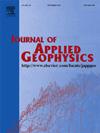增强地震特征方向:利用梯度结构张量的方向导数和希尔伯特变换的新方法
IF 2.1
3区 地球科学
Q2 GEOSCIENCES, MULTIDISCIPLINARY
引用次数: 0
摘要
地震倾角计算是地震解释和储层特征描述领域中广泛使用的一种技术,战略性地用于突出地震剖面中的断层和属性。在用于估算构造倾角和方位角的各种方法中,梯度结构张量(GST)最为突出。这种方法是利用正定 GST 矩阵的主导特征向量来确定地震数据的内线和横线倾角。在创新提案的初始阶段,我们采用了频谱平衡技术来提高地震数据的保真度。随后,在此基础上,我们引入了分析定向梯度结构张量技术,这是对 GST 的独特调整。这种新方法包括计算与地震特征垂直和平行方向的方向导数。通过加入方向导数,我们的方法能够很好地捕捉到地层的细微差别,尤其是在感兴趣的倾角方向。为了验证我们方法的准确性和有效性,我们通过对合成和实际现场地震体积结果的检验,提出了令人信服的证据。这凸显了我们提出的方法在提高地震倾角计算精度方面的稳健性和可靠性,并提供了对地下地质特征的宝贵见解。本文章由计算机程序翻译,如有差异,请以英文原文为准。
Enhancing seismic feature orientations: A novel approach using directional derivatives and Hilbert transform of gradient structure tensor
Seismic dip calculation serves as a widely employed technique in the realms of seismic interpretation and reservoir characterization, strategically employed to highlight faults and attributes within the seismic volume. Among the various methodologies utilized for estimating structural dip and azimuth, the Gradient Structure Tensor (GST) stands out. This approach involves leveraging the dominant eigenvector of the positive definite GST matrix to ascertain the inline and crossline dip of seismic data.
In the initial phase of our innovative proposal, we employed the spectral balancing technique to enhance the fidelity of seismic data. Subsequently, leveraging this groundwork, we introduced an Analytical Directional Gradient Structure Tensor technique, a distinctive adaptation of GST. This novel approach involves the calculation of directive derivatives in both perpendicular and parallel directions to seismic features. By incorporating directive derivatives, our method excels in capturing subtle stratigraphic nuances, particularly in the dipping direction of interest. To validate the accuracy and effectiveness of our approach, we present compelling evidence through the examination of synthetic and real-field seismic volume outcomes. This underscores the robustness and reliability of our proposed method in enhancing the precision of seismic dip calculations and providing valuable insights into subsurface geological features.
求助全文
通过发布文献求助,成功后即可免费获取论文全文。
去求助
来源期刊

Journal of Applied Geophysics
地学-地球科学综合
CiteScore
3.60
自引率
10.00%
发文量
274
审稿时长
4 months
期刊介绍:
The Journal of Applied Geophysics with its key objective of responding to pertinent and timely needs, places particular emphasis on methodological developments and innovative applications of geophysical techniques for addressing environmental, engineering, and hydrological problems. Related topical research in exploration geophysics and in soil and rock physics is also covered by the Journal of Applied Geophysics.
 求助内容:
求助内容: 应助结果提醒方式:
应助结果提醒方式:


